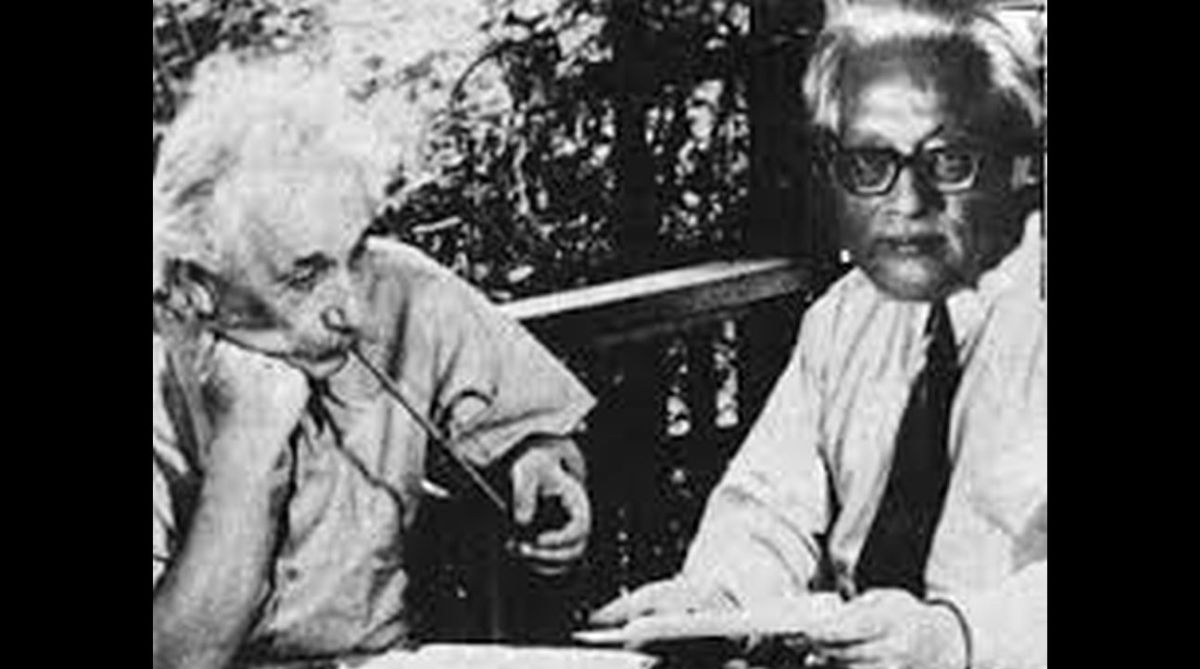There has been no other scientist in the world other than Satyendra Nath Bose whose name is indissolubly linked with Albert Einstein in Physics textbooks. This is simply due to Bose-Einstein statistics which revolutionised quantum physics and lead to the greatest scientific discovery of this generation -the Higgs Boson (popularly known as God particle) and the Bose-Einstein condensate (BEC).
Bose was born on 1 January 1894 in Calcutta. He joined as lecturer in the physics department of the University of Calcutta in 1916. During this time, he and professor Meghnad Saha translated Einstein’s works on general relativity into English from German and published them as a book. In 1921 Bose joined the physics department of Dacca University. In 1924 while teaching a class on quantum physics, Bose had a eureka moment.
Actually, Bose had been very dissatisfied with the way Plank’s quantum law of energy distribution was being derived. Earlier Ludwig Boltzmann had developed mathematics (Boltzmann law) using probability and statistics. Bose applied the statistics in a novel way to predict the number and probability of Einstein’s photons.
He decided to send his paper to Einstein and overnight became a celebrity. Einstein was delighted to receive his paper and was very positive about it.
He translated Bose’s paper in German and published it in Zeitschrift fur Physik. Einstein adopted Bose’s idea and extended it to atoms and this lead him to predict which now we call Bose-Einstein condensate (BEC) What Bose showed in his paper was that in the case of photons, classical statistics does not hold much relevance – it’s a new statistics which is now called Bose statistics. He assumed that the photons are identical and indistinguishable unlike classical gas molecules.
Bunching probability for indistinguishable photons is more likely ( if we toss two distinguishable coins the probability of bunching i.e. two heads (H) or two tails (T) coming up is 1/4=25 per cent as in this case the probable results are (H,H),(T,T).(H,T) and (T,H) but when the coins are indistinguishable the probable results are (H,H), ( T,T ) and (H,T ) and the bunching probability is 1/3=33 per cent so probability of bunching increases from 25 to 33 per cent). Einstein realised how radical Bose’s proposition was.
BEC is a quantum phenomenon, characteristic of boson particles, where macroscopically large number of particles condenses at very low temperature to ground state. Though the 1924 theory suggests that BEC does exist but it was not until 1995 when Eric Cornell, Carl Wieman and Wolfgang Ketterle verified it experimentally for which they got the 2001 Nobel Prize in Physics.
In the year 1964, Peter Higgs of Edinburg University, proposed the existence of Higgs field and Higgs boson. Theory has it that as the universe cooled after the Big Bang, an invisible force field known as Higgs field formed which pervades the entire universe.
This field can be pictured as a pool of molasses that “sticks” to otherwise massless fundamental particles that travel through the field, converting them into particles with mass. The more strongly the particle interacts with the field, the heavier it becomes. Massless particles such as photons are those that do not interact at all with the Higgs field.
Higgs boson accounts for why everything in the universe has mass. Higgs boson was detected by LHC (large Hadron Collider) experiment in the year 2012 and Peter Higgs was awarded Nobel Prize in the year 2013.
Thus we see that to detect Higgs boson it takes only 48 years (1964 – 2012) whereas BEC was detected after 71 years (1924 -1995). The question is why it takes so long time to verify BEC in the laboratory.
The reason is that the sophisticated instruments needed to verify BEC in the laboratory were not available before 1980s when laser cooling was invented and then in early 1990s magnetic evaporative cooling was invented and all these ultra cooling techniques make things happen.
Cornell, Wieman and Ketterle took rubidium (Rb87) atoms and cooled them at chilling temperature of 20 nanokelvin. In fact, BEC is the ultimate low-temperature phase of weakly interacting gas.
We know that our universe started cooling down from the time of Big Bang explosion and the average background temperature at present is 2.7 Kelvin. So any temperature below 2.7 Kelvin is artificial.
Now to make Bose-Einstein condensate to happen we need temperature of the order of 20 nanoKelvin which is much below the present average back ground temperature (2.7 K).
If the verification of BEC could have happened before 1974, Bose should have been awarded the Nobel Prize. But according to the Nobel Foundation Committee, a Nobel Prize cannot be awarded posthumously.
Bose passed away in 1974. He is regarded as a forgotten hero but a man of his calibre can never be forgotten as his name is associated with one half the particles in this world.
Since there are two kinds of particles in the universe – Bosons and Fermions, so half the particles in this universe are Bosons. As long as there is light in this universe, there will be Bosons everywhere – Bose thus becomes a household name.
The writer is head of the department of physics, Netaji Mahavidyalaya Arambagh, Hooghly.












